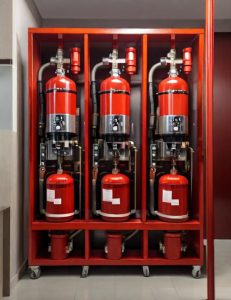![]()
Fire Immuniser
+91-7829629111
Email: info@variex.in
Varistor Technologies Pvt. Ltd.
Block-1, First Floor, Ardente Office One, Hoodi Circle, ITPL Main Road, Bengaluru, Karnataka 560048, IN
Fire Fighting System In Residential Building
Residential buildings are not exempted from the risk of fire incidents. In fact, due to their typically high occupancy rates and complex design, residential buildings pose unique challenges when it comes to fire safety. It is crucial for occupants to feel safe and confident in their living spaces, and an effective fire fighting system is a fundamental component in achieving this. In this article, we will explore the importance of a well-designed fire fighting system in residential buildings, its components, and the regulations that govern its installation and maintenance.
The Importance of an Effective Fire Fighting System
Fires can spread rapidly, and in the confined spaces of a residential building, this can have devastating consequences. An efficient fire fighting system plays a pivotal role in containing and extinguishing fires promptly, minimizing damage to property and, most importantly, protecting the lives of residents.
Prompt detection of a fire is crucial to initiate the fire fighting system and evacuate people to safety. Modern fire fighting systems incorporate advanced fire detection technology, such as smoke detectors and heat sensors, strategically placed throughout the building. These sensors are interconnected to a central alarm system, which ensures that fire emergencies are immediately communicated to all residents.
Components of a Fire Fighting System
A comprehensive fire fighting system in a residential building comprises several essential components. The primary elements are fire extinguishers, fire alarms, fire sprinkler systems, and emergency exit routes.
Fire extinguishers are the first line of defense against small, localized fires. Residents should strategically place these portable devices on each floor, commonly near stairwells and other high-risk areas. Educating residents on the types of fire extinguishers available and the appropriate method of use is crucial.
The fire alarm system is the backbone of any fire fighting system. It consists of smoke detectors and heat sensors, strategically positioned throughout the building, and interconnected to a central control panel. When smoke or heat is detected, the alarm is triggered, initiating evacuation procedures and alerting the fire department.
Fire sprinkler systems suppress and control fires until firefighters arrive. They activate by the intense heat emitted by fires and interconnect with the fire alarm system. Upon activation, they release water in the affected area, effectively extinguishing the fire and preventing its spread.
Emergency exit routes are essential for safe and swift evacuation during a fire emergency. These routes should be clearly marked and easily accessible to all residents. Stairwells, fire escapes, and elevators equipped with fire-resistant materials are common components of well-designed emergency exit routes.
Regulations and Compliance
To ensure the highest level of fire safety in residential buildings, stringent regulations and codes are in place. These regulations dictate the installation, maintenance, and inspection procedures for fire fighting systems. Compliance with these regulations is mandatory for owners and occupants alike.
Local fire departments and building regulatory authorities enforce these regulations, conducting periodic inspections to ensure compliance. To guarantee optimal functionality, regularly maintain and test fire fighting system components, including fire extinguishers, alarms system, sprinklers, and emergency exits.
Residents and building management must stay updated on regulations and seek professional guidance to ensure fire safety compliance. Neglecting regulations jeopardizes occupant safety and exposes the building and its management to legal consequences.
Conclusion
Investing in a well-designed and maintained fire fighting system is crucial for residential safety. It offers early detection and swift suppression of fires, ensuring compliance with regulations and peace of mind for residents and building management. Proactive fire safety measures create a secure living environment, prioritizing lives and property protection.
Frequently Asked Questions
What is a fire fighting system in a residential building?
A fire fighting system in a residential building refers to the equipment, measures, and procedures put in place to detect, control, and extinguish fires to protect residents and property.
What are the components of a fire fighting system in a residential building?
A residential fire fighting system comprises fire alarms, smoke detectors, extinguishers, sprinklers, hose reels, hydrants, escape routes, and emergency lighting.
Final Say
We at VariEx.in or Variexonline.com have mastered the art of designing, installing, inspecting, and fixing automatic sprinkler systems with the help of our in-house team, which is capable of delivering the fire sprinkler services you need, whether large or small and at affordable cost.
To schedule a fire sprinkler installation, or you think our services could benefit your commercial property, contact us online or give us a call at, 7829629111










